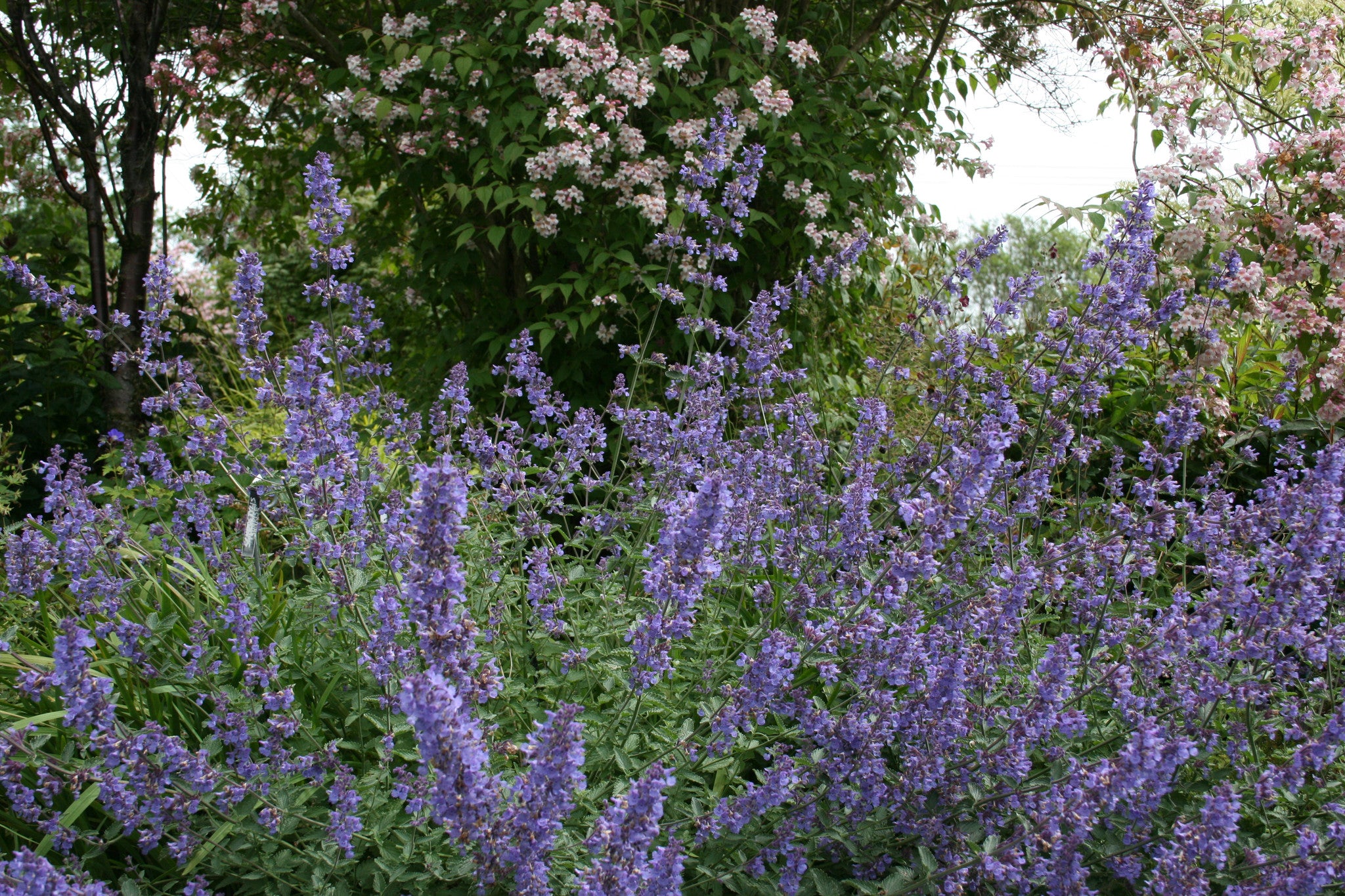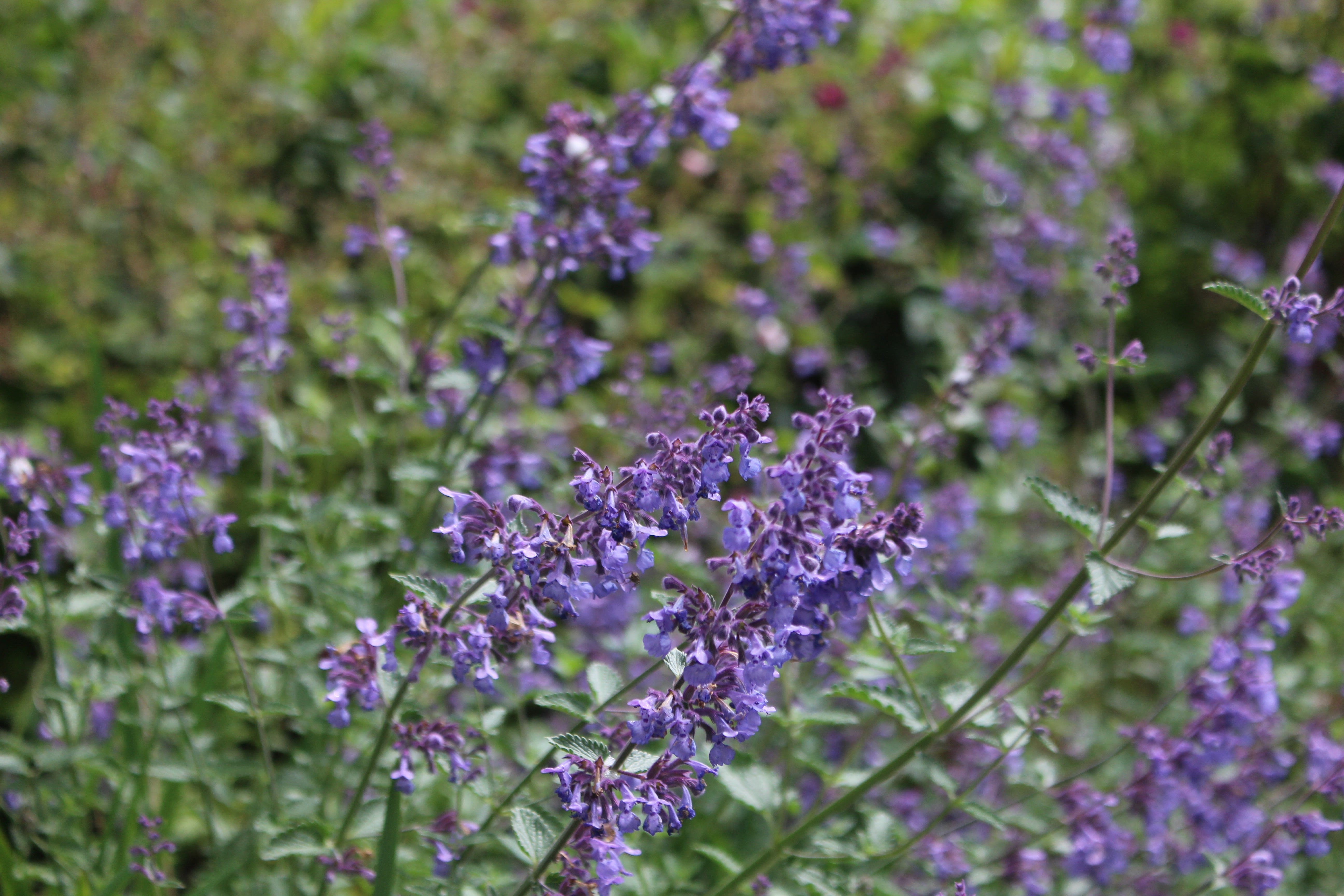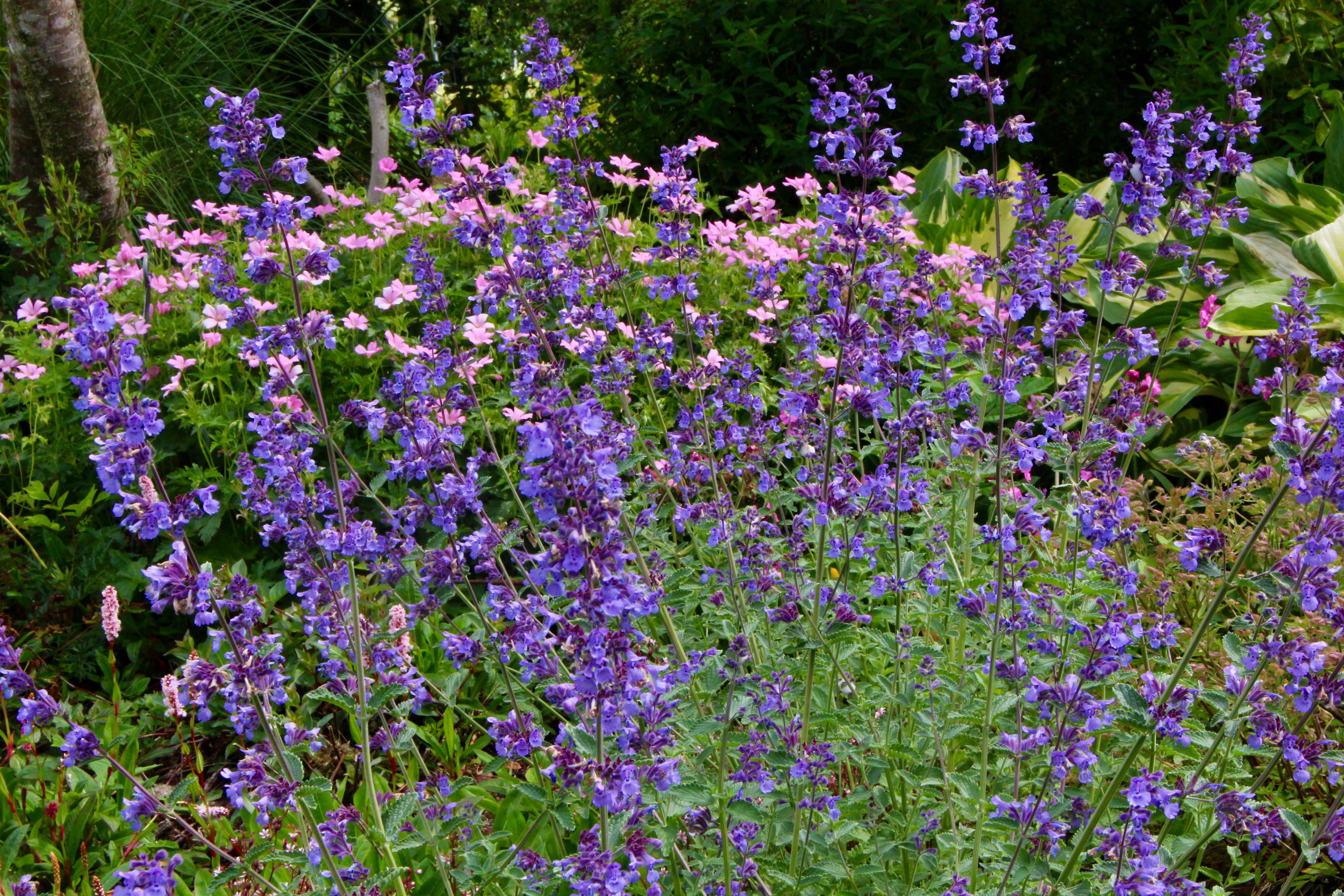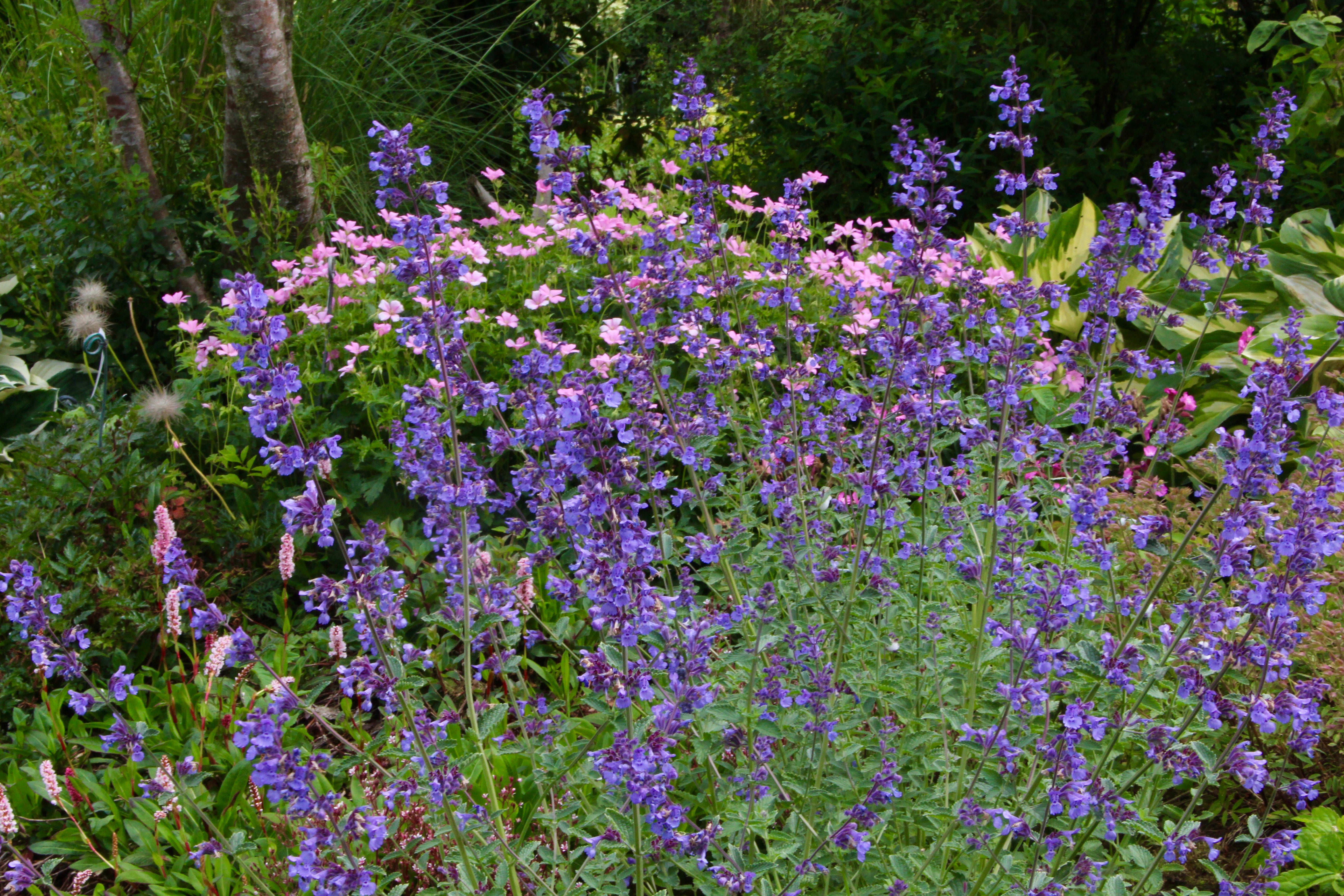Nepeta racemosa 'Walker’s Low'
Approx. 0.5 litre pot
About this cultivar:
Nepeta racemosa 'Walker’s Low' is a classic cultivar even though it was only introduced in 1988. Although its name implies that Walker's Low is a dwarf catmint, it actually grows to 36 inches tall and spreads up to 36 inches. It is named for a garden, rather than for its habit (no-one ever belives me on this, do I have that look?). The deep lavender-blue flowers are some of the most vividly coloured of the Nepeta we offer.
- Position: Full sun, partial shade
- Soil: Almost any soil, grows well in Ballyrobert
- Flowers: July, August, September
- Other features: Bees and Butterflies, Cut Flowers or Dried Flowers, Scented
- Hardiness: Fully hardy, grows well in Ballyrobert
- Habit: Clump forming, bushy
- Foliage: Deciduous
- Height: 60 - 90 cm (2 - 3 ft)
- Spread: 50 - 75 cm (1.7 - 2.5 ft)
- Time to full growth: 2 to 5 years
- Plant type: Herbaceous Perennial
- Colour: Green, purple
- Goes well with: Buddleia, Rosa, and ornamental grasses
About this genus:
Nepeta (nep-e-ta) is a genus of flowering plants known commonly as catmints. The genus name is reportedly in reference to Nepete, an ancient Etruscan city. The genus contains roughly 250 species of herbs native to Europe, North Africa, and temperate parts of Asia, but has been spread worldwide by gardeners. Nepeta is in the mint family (Lamiaceae) which is apparent as soon as you look at the 2-lipped flowers or smell the leaves, some of which have a minty scent.
Of course, if your cat smells Nepeta (especially N. cataria), its response will be different than yours. Cat noses can pick up a particular compound in the leaves called nepetalactone which creates a short-lived euphoric reponse. Most gardeners prefer to grow Nepeta cultivars such as 'Walker's Low' that have been selected for a shorter, bushier, more floriferous habit and for sterility - but don't let that stop you.
Nepeta prefers a full sun or part sun site and is tolerant of humidity, heat, dry soils, wet soils, and coastal conditions. It is a great plant for almost anywhere- Nepeta flowers also are bee and butterfly magnets.
Try combining Nepeta with Buddleia and ornamental grasses for a nice textural contrast. Rosa and Iris are classic companions. Often cultivated in the herb garden, Nepeta combines well with Salvia (Sage), Thymus and silvery plants like Stachys byzantina (lamb's ears). I think Nepeta are great alternative to Lavandula (they don't grow woody and are more tolerant of a wide range of conditions).








